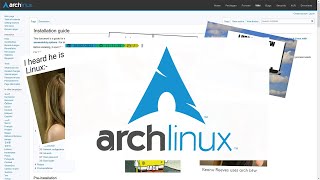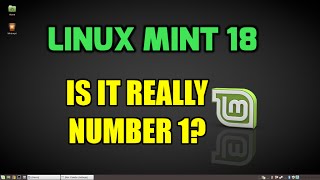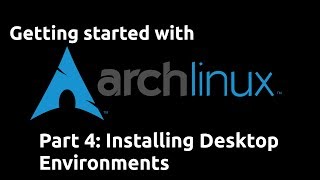Tuesday, 23 December, 2025г.
















Где искать: по сайтам Запорожской области, статьи, видео ролики
пример: покупка автомобиля в Запорожье
Arch Linux 2017 Installation + KDE Plasma 5 + Apps + VMware Tools on VMware Workstation [2017]
This video tutorial shows Arch Linux 2017 Installation with KDE Plasma 5 Desktop and Review on VMware Workstation step by step. We'll also install applications such as Firefox, VLC, GIMP, FileZilla and LibreOffice on Arch Linux 2017.03. This tutorial is also helpful to install Arch Linux 2017 on physical computer or server. We'll also install and test VMware Tools (Open VM Tools) on Arch Linux for better performance and usability features such as Fit Guest Now, Drag-Drop File, Clipboard Sharing and Mouse Integration.
Steps:
1- Download Arch Linux 2017.03 ISO
2- Create Virtual Machine on VMware Workstation/Player
3- Start Arch Linux Base Installation
4- Installing Xorg and KDE Plasma 5 Desktop
5- Installing Firefox, VLC, GIMP, FileZilla and LibreOffice Applications on Arch Linux
6- Installing and Configuring VMware Tools (Open VM Tools)
7- Arch Linux 2017 KDE Plasma 5 Review
What is Arch Linux?
Arch Linux is an independently developed, i686- and x86_64-optimised Linux distribution targeted at competent Linux users. It uses pacman, its home-grown package manager, to provide updates to the latest software applications with full dependency tracking. Arch Linux uses a rolling release model, such that a regular system update is all that is needed to obtain the latest Arch software. The installation images released by the Arch team are simply up-to-date snapshots of the main system components. The default install provides a solid base that enables users to create a custom installation. In addition, the Arch Build System (ABS) provides a way to easily build new packages, modify the configuration of stock packages, and share these packages with other users via the Arch Linux user repository.
Arch Linux Website: https://www.archlinux.org/
Arch Linux 2017.03 New Features and Improvements
Due to the decreasing popularity of i686 among the developers and the community, they have decided to phase out the support of 32-bit architecture. Arch Linux 2017.02 ISO was the last that allows to install 32-bit Arch Linux. The next 9 months are deprecation period, during which i686 will be still receiving upgraded packages. Starting from November 2017, packaging and repository tools will no longer require that from maintainers, effectively making i686 unsupported. There's only one option for installing the Arch Linux operating system on new PCs, for 64-bit (x86_64) platforms.
What is KDE Plasma 5?
KDE Plasma 5 is the fifth and current generation of the desktop environment created by KDE primarily for Linux systems. KDE Plasma 5 is the successor of KDE Plasma 4 and was initially released on 15 July 2014. It includes a new default theme, known as "Breeze", as well as increased convergence across different devices. The graphical interface was fully migrated to QML, which uses OpenGL for hardware acceleration resulting in better performance and reduced power consumption. Plasma 5.0 improves support for HiDPI displays and ships a converged graphical shell, able to modify the graphical shell according to the device in use. It also includes a new default theme, dubbed Breeze.
Hope you found it informative and useful. Any questions or comments are welcomed.
PLEASE SUBSCRIBE TO THE CHANNEL
----------------------------------------------------------------------------
Website: http://www.SysAdminsHowto.com/
Facebook Page: https://www.facebook.com/SysAdminsHowto/
Twitter: https://twitter.com/SysAdmHowto
Linux Video Tutorials: https://linux-video-tutorials.blogspot.com/
Arch Linux 2017 KDE Plasma Installation Video: https://youtu.be/L-fNv9QqFfA
Install Arch Linux 2017 KDE Plasma 5 with Apps and Review Tutorial: https://goo.gl/OdiSP2
Теги:
install arch linux 2017 on vmware arch linux 2017 kde installation arch linux kde arch linux 2017 kde arch linux 2017 installation on vmware install arch linux kde plasma arch linux install vmware arch linux vmware tools install arch linux on vmware arch linux arch linux 2017 review install arch linux 2017 arch linux 2017 arch linux review arch linux desktop sysadmin kde arch linux tutorial linux video tutorials linux linux tutorial
Похожие видео
Мой аккаунт


![Arch Linux 2017 Installation + KDE Plasma 5 + Apps + VMware Tools on VMware Workstation [2017]](https://pic.portall.zp.ua/mq/a/74/2v9QqFfA1L-fNb.jpg) У вашего броузера проблема в совместимости с HTML5
У вашего броузера проблема в совместимости с HTML5![Simple Arch Linux Install Guide [2019] Arch Linux complete installation guide](/images/mq/4/1b/804qZahk6Zt0tc.jpg)


